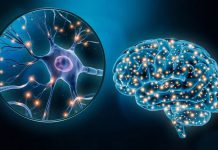Researchers at the University of Cambridge have used human data to quantify the speed of different processes that lead to Alzheimer’s disease, according to Science Daily.
They found that the condition develops in a very different way than previously thought. Their findings could help develop new treatments.
The investigators, who published their findings in the journal Science Advances, found that Alzheimer’s reaches different parts of the brain early, instead of starting from a single point in the brain and initiating a chain reaction that leads to the death of brain cells.
The team analyzed post-mortem brain samples of patients who had Alzheimer’s and PET scans of living patients with mild cognitive impairment to full-blown Alzheimer’s. They tracked the aggregation of tau, a key protein that is responsible for causing the condition.
In Alzheimer’s, tau and amyloid-beta, another protein, build up into tangles and plaques, causing brain cells to die and the brain to shrink, resulting in memory loss, personality changes, and difficulty carrying out daily functions.
The researchers then observed that the “mechanism controlling the rate of progression in Alzheimer’s disease is the replication of aggregates in individual regions of the brain, and not the spread of aggregates from one region to another,” according to Science Daily.
The findings open up new ways of understanding the progression of the disease as well as other neurodegenerative diseases, paving new ways to treatments that might be developed in near future.
The study’s first author Dr. Georg Meisl said, “The thinking had been that Alzheimer’s develops in a way that’s similar to many cancers: the aggregates form in one region and then spread through the brain. But instead, we found that when Alzheimer’s starts there are already aggregates in multiple regions of the brain, and so trying to stop the spread between regions will do little to slow the disease.”
The study’s co-senior author Prof. Tuomas Knowles said, “This research shows the value of working with human data instead of imperfect animal models.”
“It’s exciting to see the progress in this field – fifteen years ago, the basic molecular mechanisms were determined for simple systems in a test tube by us and others; but now we’re able to study this process at the molecular level in real patients, which is an important step to one day developing treatments,” he added.
“Neurons are surprisingly good at stopping aggregates from forming, but we need to find ways to make them even better if we’re going to develop an effective treatment,” said another co-senior author Prof. Sir David Klenerman. “It’s fascinating how biology has evolved to stop the aggregation of proteins.”
“The key discovery is that stopping the replication of aggregates rather than their propagation is going to be more effective at the stages of the disease that we studied,” Prof. Knowles said.
The team is now planning to look at the earlier processes in the development of Alzheimer’s.
They are also planning to extend the studies to other diseases such as dementia, traumatic brain injury, and palsy.























